Planting bee friendly herbs & plants in your garden area is a win for both nature’s pollinators & your culinary ventures alike. Attracting pollinators is easy to accomplish when you focus on planting herbs & plants that provide a nectar & pollen source throughout the season.
This post may contain affiliate links at no additional cost to you. By making your purchases through the links on this website, IMSL may make a small percentage at no direct cost to you. IMSL only promotes products we use & truly believe in. Please refer to my Privacy & Disclosures for further information. IMSL thanks you for your support!
You’ve most likely heard about the alarming death rates of bees with the “colony collapse disorder”, aka CCD, largely focused on honeybees. However, this decline does not just stem toward our wonderful honeybee population. It has affected all pollinators as well.
WHY POLLINATORS ARE IMPORTANT IN THE GARDEN
Why should you be concerned that pollinators are on the decline? Pollinators provide a vital role in the production of food. With over 30% of our food sources relying on pollinators for reproduction, we should all be concerned with their decline. That translates to 1 out of every 4 bites or drinks we consume being directly related to the hardwork of pollinators.
“Pollination results in the production of seeds and is necessary for many plants to reproduce.”
Penn state
Honeybees make up only a portion of what is considered “pollinators” in nature. Butterflys, wasps, beetles, bats, hummingbirds, and yes, even, flies play an important role in the pollination process.
Their role, however, is not limited to pollinating food only. Their jobs are massive in comparison to their tiny size. They take a major role in the creation & maintenance of ecosystems & habitats that many animals rely on for food & water. Pollinators play a huge role in the reproduction of all flowering plants, a whopping 90% role!
POSSIBLE CAUSES FOR COLONY COLLAPSE DISORDER
With such an important role that all our pollinators play in nature & the creation of our food, it’s no wonder so much attention has been placed on this disorder.
It’s important to understand exactly what CCD is. According to an abstract linking “a potential link among biogenic amines-based pesticides, learning and memory, and colony collapse disorder”, the definition is largely…
“a mysterious phenomenon in which adult honeybee workers suddenly abandon from their hives, leaving behind food, brood, and queen.”
Science direct
Many issues including an invasive mite (varroa mite), newly discovered diseases; Israeli Acute Paralysis virus and the gut parasite Nosema, and pesticide/herbicide poisoning are all linked to the declines.
According to the hypothesis discussed in the above mentioned abstract, “chronic exposure of biogenic amines-based-pesticides to honeybee foragers in hives and agricultural fields can disrupt neural cholinergic and octopaminergic signaling”, an issue where the pollinator basically loses its memory to return to the hive, pesticide poisoning is a main focus.
Our natural fruit & veggie wash article goes a bit more in depth in regard to modern-day pesticide useage, what they are, & how they are used, and should be of concern to everyone.
ARE HERBS BEE FRIENDLY
YES! Many herbs are wonderfully bee & pollinator friendly! Bees tend to love herbs & flowering plants that thrive in full sun conditions. Honeybees in particular are attracted to those plants with flowers on the smaller size such as herbs.
As an advid vegetable & herb gardener, IMSL plants an abundance of herbs, flowering perrenials & flowering shrubs right alongside our vegetable garden to entice pollinators to our veggie garden. Typically what we as humans find attractive in our gardens, so too will our pollinators…for the most part 🙂
HERBS & PLANTS BEES LOVE
Anyone who gardens & purchases plants at their local nurseries know that gardening is not cheap. If the goal is to plant bee friendly herbs & plants, knowing ahead of time which they prefer may save you some cash while shopping at the nursery.
BEE FRIENDLY HERBS
The beauty of gardening with herbs is that they are so easy to grow. Full sun-loving & adaptable to many growing & soil conditions, it is easy to establish a bee friendly herb garden or additions to vegetable & garden beds alike.
There is a wide variety of herbs that bees & pollinators alike love. Below is a list that might be of interest.
- Thyme
- Basil
- Mint
- Catnip
- Camomile
- Fennel
- Coriander/Cilantro
- Marjoram
- Oregano
As with most all things gardening there are favorites. Here are six of our favorites here on the hill in no particular order.
BORAGE
Beautiful borage. Borage, aka, starflower due to its beautiful star shaped flower when in full bloom, is native to the Mediterranean area, but fortunately for us here in the US, has naturilized in many other parts of the world.
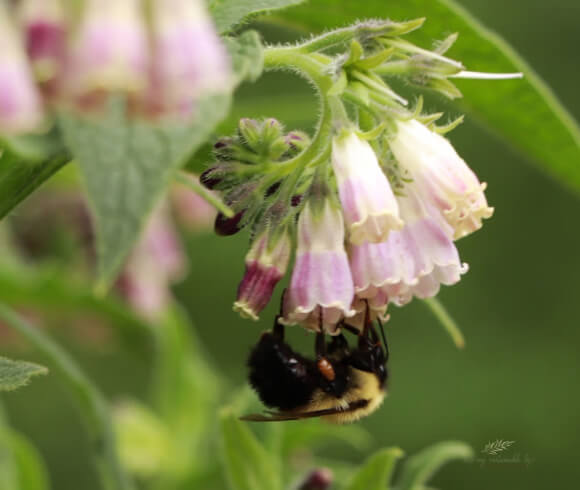
GROWTH HABIT
Borage is easy to grow, grows quite tall 2-4 ft, & is one of the most popularly visited herbs in my herb garden by pollinators of all kinds, especially the bumblebee 🙂 A wonderful companion plant & pest deterrent, borage claim to fame in this area is its ability to repel hornworms.
Borage leaves, stocks, & flowers are all edible, with a taste very similar to that of a cucumber. This annual herb blossoms in late spring through the summer months with proper care & deadheading.
KITCHEN ADDITIONS
We love to add the flowers to summer salads for a bit of beauty & flavor. Borage can be made into creative cocktails, or even used as a garnish. Freezing these beautiful flowers into cubes make an amazing addition to summer drinks.
MEDICINAL USE
There are a few medicinal uses for borage if you are so inclined. Considered by herbalists as a diuretic, demulcent, emollient, borage has been used throughout the ages to treat many ailments.
The flowers & leaves have been used for depression, fever, & cough. The medicinal properties within borage have also been used to help correct adrenal insufficiency, blood purification, to assist with urine flow, prevent inflammation of the lungs, used as a sedative, & to promote sweating.
ROSEMARY
This drought tolerant herb grows wonderfully, albeit a bit slowly here on the hill due to our weather. In colder climates, consider transplanting this herb into pots to bring indoors or simply preserve for long-term use.
GROWTH HABIT
Rosemary can grow into a large bush in some parts of the world (definitely not here!) and the needles can be harvested year round.
Rosemary will produce lovely, flared, blue’ish flowers that attract many pollinators. Flowering starts in springtime and can continue throughout the year in many climates. Rosemary will grow well both in the soil of the garden and in pots. It makes a wonderful addition to any bee friendly garden.
KITCHEN ADDITIONS
Here on the hill we use both fresh & dried rosemary year round. It makes a flavorful addition to sauces (love it added to our homemade pizza sauce), and many savory dishes, soups, stews, meat & fish dishes.
MEDICINAL USES
In addition to rosemary’s well known culinary uses, it has been utilized in Ayurvedic medicine for centuries. Rosemary tea has been ingested for ailments ranging from digestion issues, blood sugar ailments, to even mood & memory issues.
It’s anti-microbial, anti-inflammatory, and antioxidant compounds make for a wonderful hydrosol that we make here on the hill and add to our personal care products as well as our bug repellants.
LAVENDER
Lavender may be the all time favorite to grow here on the hill for many reasons. Not only as a wonderful pollinator attraction, but also as a wonderful reminder of giving birth to my daughter (lavender oil was liberally used during the birthing process!).
GROWTH HABIT
This incredibly aromatic herb typically grows in a round, bushy shaped shrub in warmer climates. Here in our colder climate, our “Munstead” variety remains lower growing & compact, and is hardy for our gardening zone.
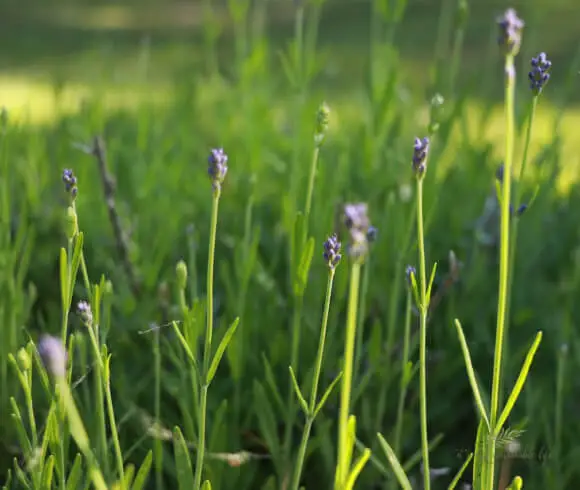
Bees and pollinators are drawn to lavenders spikey purple-blue flowers.
KITCHEN ADDITIONS
Lavender has a strong flavor that is often referred to as “herbal”, “astringent”, & “earthy”. It has hints of rosemary & mint, and no wonder as it’s closely related to these two. Used sparingly, lavender can make amazing additions to syrups, drinks (think lemonade or even cocktails), & desserts.
MEDICINAL USES
With lavenders anti-septic and anti-inflammatory properties, lavender has long been used to treat burns, bug bites, and even fungal infections.
Lavenders ability to heal & treat a multitude of skin issues from blemishes/acne & eczema, used as aromatherapy for relaxation/sleep issues, and potential help when used in tea for digestive issues, make this herb one of our absolute favorites!
What’s the favorite way we utilize this amazing bee-loving herb? We dry the flowers and add them to our “Restful Lavender & Flax Eyepillows”. Be sure to visit this tutorial on how easy they are to make & benefit from!
SAGE
Sage may be the easiest herb to grow that we grow in our gardens. This perennial herb (comes back yearly) does very well here in zone 5b. We love to dry our sage late fall for use in daily sage tea & culinary dishes.
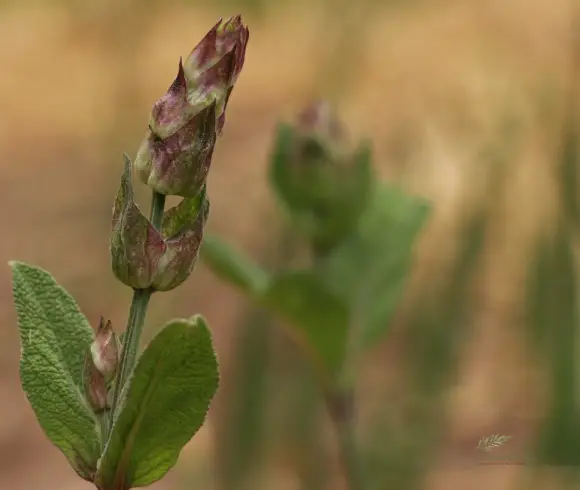
GROWTH HABIT
Sage, a green perennial shrub, produces soft, gray-like leaves on very woody stems. It will prolificaly produce long, purple, spear-like, blue to purple flowers that pollinators flock to. Sage thrives in full sun but will tolerate a bit less. Grow this herb in sandy/loam that drains well.
KITCHEN ADDITIONS
Sage has all the “anti” compounds anyone could want. It’s antibacterial, antiviral, antifungal, and antioxidant effects offer a wide range of therapeutic benefits.
A little sage will go a long way due to its strong flavor. Sage added to pork, beef, chicken, and most fatty meats makes for a delicious meal. Fried leaves added to these dishes are spectacular. Chopped and added to homemade pasta with melted butter, can we just say it? YUM!
MEDICINAL USES
As stated, sage has been used in Ayurvedic medicine for centuries. A tea made with sage leaves is touted for its cooling effects with fevers and as a cleanser or purifier of the blood. A tonic is used for stomach & digestive issues. An infused oil has been used to treat rheumatism & gout pain.
Sage leaves have been used to cleanse negative energies from person or space and to promote healing & wisdom in many indigenous cultures . Studies have been done to conclude that up to 94% of bacterial counts can be negated by smudging or medicinal smoke.
CHIVES
Another of our favorites that is extremely easy to grow in our bee friendly herb garden is chives. Chives are prolific growers & offer pollinators a nectar source several times throughout our growing season.
GROWTH HABIT
Chives, a cool-season crop (grows best spring & fall), may go dormant during the hotest temps of the season & return for a second round of growth during the cooler fall months.
They consist of small “clumps” of thin, tubular shaped spears that grow 10-20 inches in height. Unlike green onions which utilize both the white & green parts of the plant are eaten, chives utilizes the green stalks & flowers only & tend to be milder in flavor, more tender & are best used in their raw state.
Chives produce beautiful, globe-like purple flowers at the end of their stalks. It is these flowers that our pollinator friends flock to.
This herb benefits from frequent cuttings to promote tender growth. If let go, the stalks become tough & woody. Simply remove these tough stalks to promote new growth.
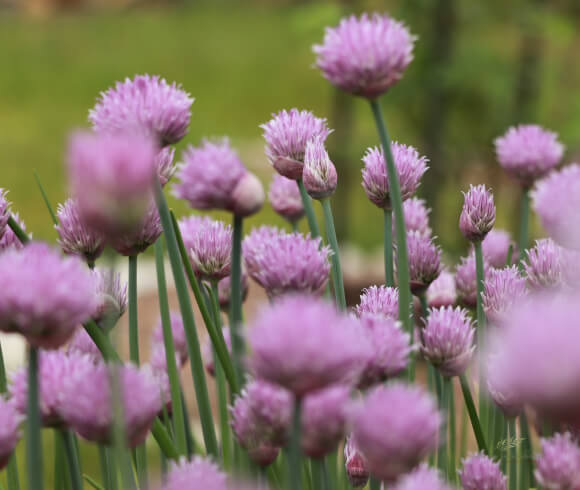
KITCHEN ADDITIONS
Chives mild flavor are a perfect addition to add to any dish that needs a bit of onion-like flavor. We prefer to add chives at the end of cooking any dish or when serving to retain their flavor. Think baked potato, fish, seafood, & omelets. To use, we like to simply gather a handful & snip into lengths with kitchen shears.
The flowers themselves are edible as well & make a beautiful addition to salads. We love to place chive flowers into a mason jar, cover with ACV and let set for a week or two. Strain the flowers out & enjoy the infused vinegar in dressings & marinades!
MEDICINAL USES
Chives strength lies in its nutritional value & very rarely if at all is used medicinally. Considered a nutrient-dense food, chives are low in calorie & packed with vitamins, minerals, and antioxidants.
LEMON BALM
This aromatic herb (crush the leaves in your hand & smell!), also referred to as “sweet Melissa” is a lemon scented herb that lovers of lemon will, well, love! Coming from the same family as mint, this prolific perennial herb grows well here on the hill, attracting pollinators to its creamy white flowers.
GROWTH HABIT
Lemon balm is not a picky grower. Like mint, unless kept cut back & tended, may overtake your garden in the blink of an eye. Many prefer to grow in pots or in an area where they let it roam.
Grown in full sun it will thrive, but it will tolerate a bit less. Lemon balm will grow in just about any soil conditions, however, it prefers rich, well-drained soil. It grows in a clump-like formation & can reach a height of 24 to 36 inches tall.
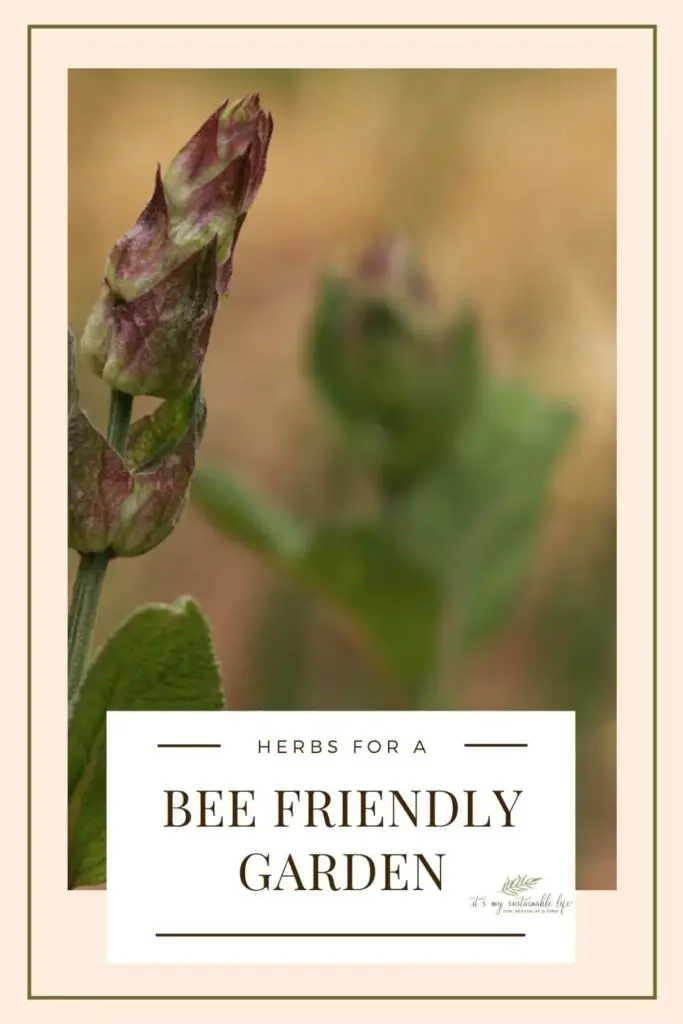
Lemon balm blooms throughout the summer and into the fall months. This leafy herb produces small, creamy white flowers.
KITCHEN ADDITIONS
There are lots of uses in the kitchen for this fast growing herb. Use in brewing tea, flavor fruit, add to salads, seafood dishes, or just about anything you would add lemon peel to!
It even makes an amazing addition to sugar cookies, creating a lemony tea cookie!
MEDICINAL USES
Lemon balm is considered a calming herb. Used as far back as the Middle Ages, lemon balm has been used to reduce stress & anxiety, promote sleep, improve appetite, & ease digestion issues such as gas & bloating.
Dry this herb & have on hand to add to your favorite herbal tea or simply drink alone to promote ease within the body & mind.
HERBS BEES HATE
Are there any herbs that bees or pollinators really dislike? Not many herbs, however, lemongrass is one that reputedly repels wasps. The common mosquito repellant “citronella” is derived from lemongrass after all. There are a few plants & flowers other than herbs that bees may not enjoy.
- Marigold
- Eucalyptus
- Wormwood
- Geranium
BEE LOVING SHRUBS, TREES, & FLOWERS
When planting with the thought of attracting pollinators to your yard area, don’t discount shrubs, trees, & flowers. Many of which can be a huge attraction to bees.
Take a peek at the video below & see and hear the amazing buzzing of our “Prairie Fire Crabapple” tree that was filmed late spring!
A few considerations for adding shrubs & trees that are bee friendly are…
- Lilac
- Viburnum
- Buddleia
- Hibiscus
- Hydrangea
Full sized tree options range from fruiting trees, think apple, pear, cherry, & plum, to name a few. There are so many more options that flower but may produce a “fruit” that we don’t typically utilize such as our “Prairie Fire Crabapple” (however, the the birds love the fruit of this tree!).
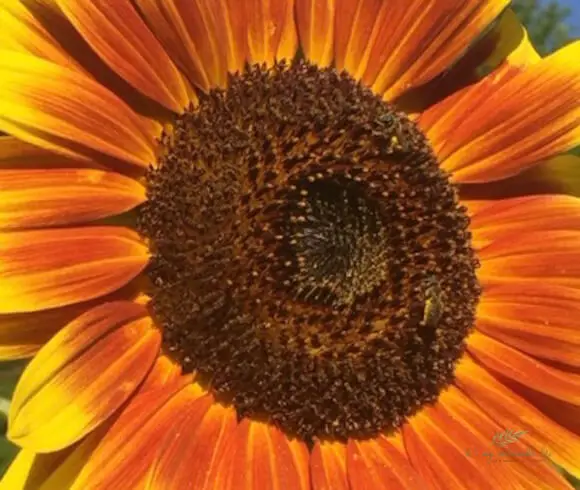
And don’t discount the attraction to beautiful flowers such as the sunflower shown above! We love to grow these right in our vegetable garden, we let them self-seed for next years new growth, for attracting beneficial pollinators. These large flowers keep our bee population very happy when blooming, & feed the birds (& us at times) as well.
Other flowers we have available in our garden space and we love are…
- Globe Flower
- Liatris
- Calendula
- Cosmos
- Echinacea
- Bee Balm
With so many uses for herbs, culinary, medicinal, pollinator attraction, & fragrance, it’s no wonder that we love to add them to our gardens, herb beds, & pots. Easy to grow and beneficial. What more could you ask for?
Are you in need of a way to keep track of all your gardening endeavors? Our complete Garden Management Planner is now available for purchase in our Etsy shop! With over 24 beautiful pages that you can print and re-print year-to-year, this organizational tool tracks, organizes, and manages every aspect of your garden.
And did I mention how pretty they are 😉
Join in our conversation below with your favorite bee friendly herbs! Follow IMSL on all social media by simply clicking the icons found below.
Love, Light, & Laughter ~


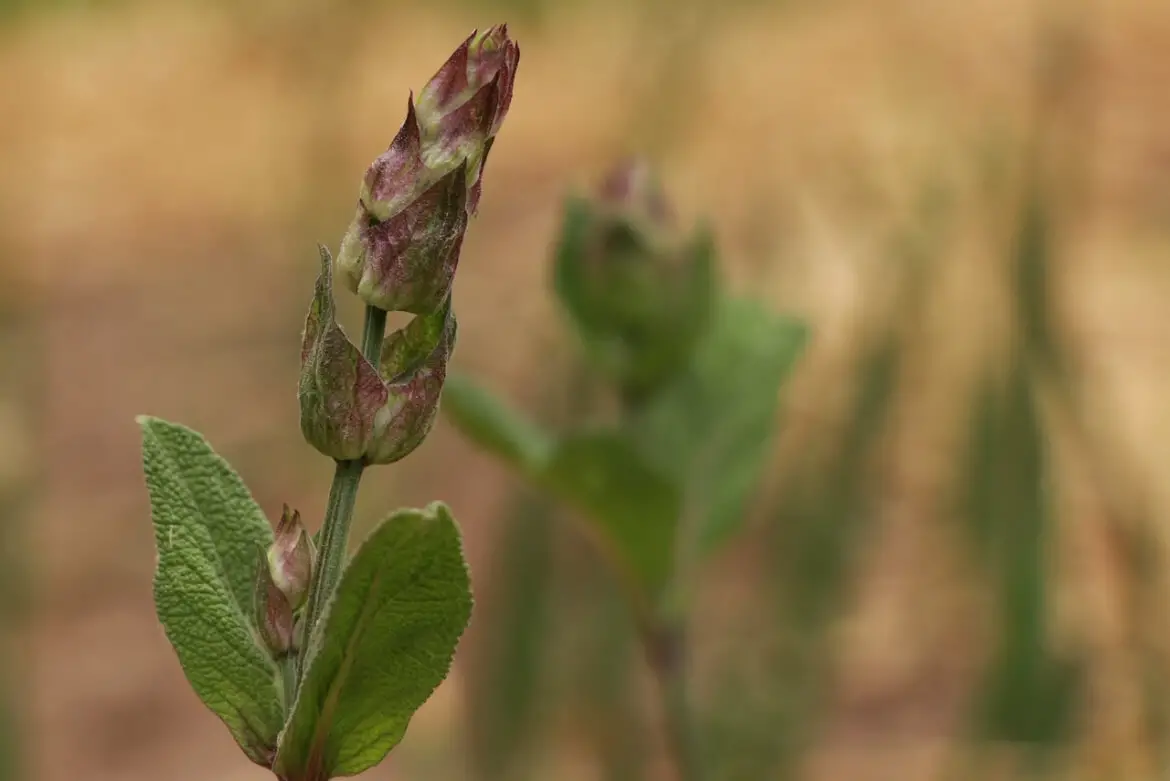

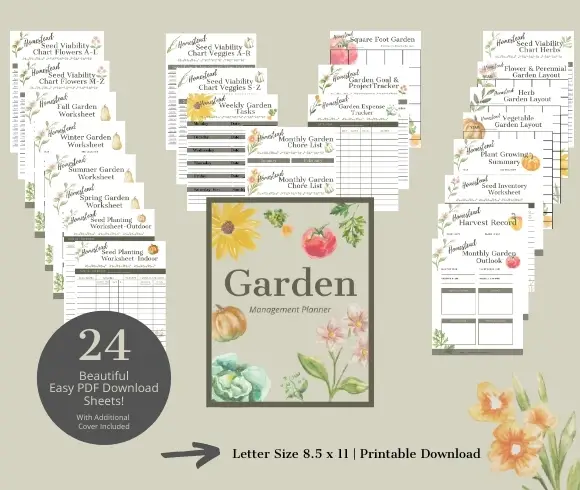
37 comments
This is such an informative post – I loved reading about the herbs and their various uses. I only have had success with Rosemary, but I would like to give it another shot this next spring. They are so useful!
Great list. I love attracting the pollinators. I have all those in my herb garden or flower borders except borage.
Perfect timing for this post!! I just planted some herbs last week!!! Great tips!!
Lots of great info!
I have a love for bees and the worth they do but I don’t really like to be near them. They really are so important!
I had no idea bees did not like marigold! I always have those in my garden because the remind me of my Oma. Luckily I do have a few of the bee friendly plants as well 😊😊
The good news is that Marigold has many other benefits in our landscaping & gardens!
Wow! There’s a lot of information here. Thank you!
Cool post! I have a few herbs growing on my deck, and I have some flowers here and there–morning glories, petunias, zinnias, and moss roses. I’m not sure if bees like those, though. I was trying to attract hummingbirds with the zinnias. I’ll have to read up on the flowers for the bees. My neighbor across the street has a hive in their backyard, but I haven’t noticed bees near us. Now I will take a closer look!
We never knew bees liked specific trees and shrubs. Thank you for sharing.
I’ve never heard of Borage before. But we have grown rosemary and lavender in the past.
I had no idea there were specific plants that bees like. Very informative.
Great advice, pinned! Thanks for sharing with Encouraging Hearts and Home Link-up! Come and join us again!
I like to have flowers bordering my garden for bees. Perennials that are already attracting lots of bees at the nursery have been best for me.
Happy to report I have many of these herbs planted this year! So happy to help out the bees a bit!
We have some of these plants in our flower beds around the house. We get lots of bumble bees and love sitting on the porch watching them do their thing!
My dad has been struggling with his bee colony. He thinks his Queen died, but it could be something else like you describe here.
I’m sorry to hear that. Maintaining, overwintering, and keeping successful hives is a difficult task. Hopefully he has people he can reach out to for assistance. Thank you for reading & stopping by!
I know that bees are super important and without them so much plant life would be dead, but I don’t think I could ever do something to purposely attract bees to where I live. My apartment doesn’t have any sort of outdoor space anyway, so it’s not something I ever have to deal with unless I move, but I hate when bees come flying around me.
Many feel like you. However, just know they are searching for food and not out to get you, LOL. Thanks for reading!
Wow, I assume bees like all flowers. Great read!
Thank you!! Great information and insight! We are struggling with bees this year… our neighbors are setting traps and killing them.. so frustrating!
Oh my! Hopefully you can communicate with them in regard to their importance and roll in nature.
Thanks for this information. I wish that I could get my girls to get over their fear of bees. They have been stung by a wasp before and now all flying insects scare them. I would love to hear if you have any tips on how to overcome a fear of bees (especially for kids).
Not sure of the childrens ages, but maybe opening up the conversation of the importance of pollinators. Making fun games around bees (hide and seek type games in the garden or park etc), books educating about the roll of pollinators in nature and discussing that the wasp was only protecting himself when he stung. Also, remaining calm and positive when around flying friends & praising them when they display positive reactions around insects. Hope that helps and resolves for you and your girls!
Great information. I saw lots of bees in early Spring this year with all of our dandelions. I’m hoping to see them again when the sunflowers begin to bloom. We have definitely had lots of butterfly’s this summer too already!
Dandelion is a wonderful first source of food for bees. Happy to hear pollinators are being drawn to your space!
What an amazing source of information – I was happy to see that I have many of these plants in my garden already! I have been trying to help the bees, and a great side effect are the butterflies and hummingbirds that we now get too.
Awesome! Thats the beauty, nature will balance itself out if we let it. And we get the added benefit of viewing & watching them. Thanks so much for stopping by!
I love lilac! Now I have a good reason to get myself from procrastinating and plant some!
I just got Marigold seeds and some other butterfly-attracting seeds for my fall garden. I will be excited to see how they work.
So glad you are thinking of the pollinators! Just be aware that marigolds are not typically liked by bees but attract many other pollinators.
I was surprised at some of the plants on this list. My students read up a bit on CCD this year, so we’re very concerned about the future of honeybees.
I would love to hear in what way you are surprised? And absolutely love that your students are interested in this topic!
I enjoyed reading your informative post ~ very interesting! I never really thought about bees not liking marigolds and geraniums. In that case, I need to include some flowers they like to my front porch area.
Again a lot of great information and love your posts. A very interesting read for sure. Thanks.
You are such a wealth of information, I hope you know that! This is the first year I’ve planted some herbs in with my vegetable garden to attract more bees and butterflies. Hoping we yield a lot more produce!